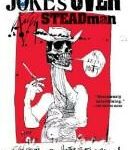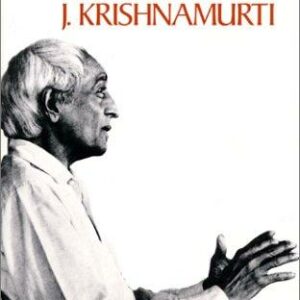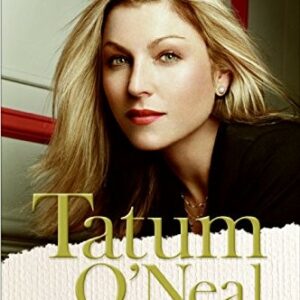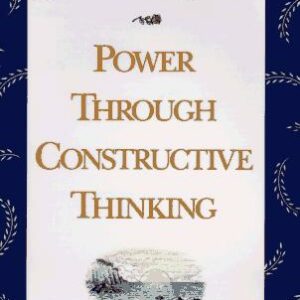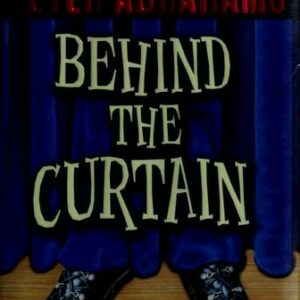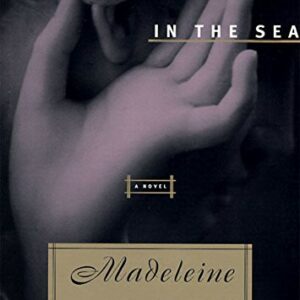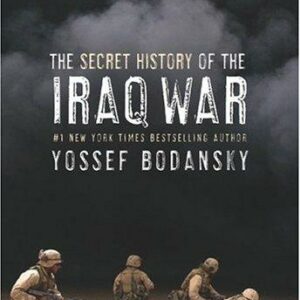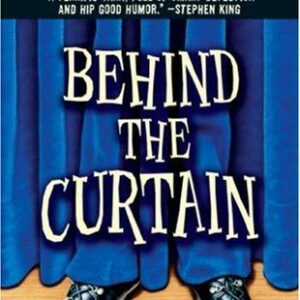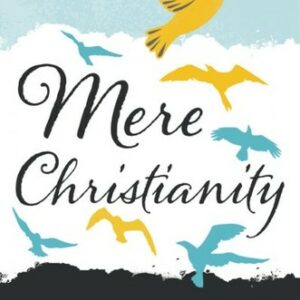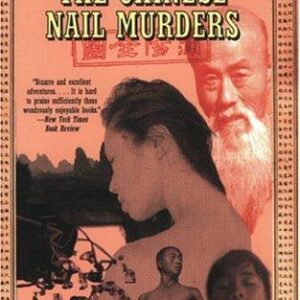0 ITEMSView cart
The Joke’s Over
$16.99
| Title | Range | Discount |
|---|---|---|
| Trade Discount | 5 + | 25% |
- Description
- Additional information
Description
Description
In the spring of 1970, artist Ralph Steadman went to America in search of work and found more than he bargained for when he met Hunter S. Thompson at the Kentucky Derby. Their remarkable collaboration resulted in the now-legendary Gonzo Journalism, which would document the civil rights movement, the Nixon administration, Watergate, and the many bizarre and great events that shaped the second half of the twentieth century. When Thompson committed suicide in 2005, it was the end of a unique friendship filled with both betrayal and understanding. A rollicking, no-holds-barred memoir, The Joke’s Over is the definitive inside story of the Gonzo years.
PRAISE FOR THE JOKE’S OVER
“Hunter Thompson’s marvelously deranged illustrator, Ralph Steadman, gives us a terrific memoir with The Joke’s Over . . . His testament to Thompson, light on hyperbole, is both fitting and touching.”—New York Post
“There can be no question that Hunter S. Thompson’s pivotal works would not be the same without the accompanying artworks of his partner Ralph Steadman . . . A vivid, well-written paean to Thompson and, by extension, the character of the American rebel.”—The Buffalo News
“Hunter Thompson’s marvelously deranged illustrator, Ralph Steadman, gives us a terrific memoir with The Joke’s Over . . . His testament to Thompson, light on hyperbole, is both fitting and touching.”—New York Post
“There can be no question that Hunter S. Thompson’s pivotal works would not be the same without the accompanying artworks of his partner Ralph Steadman . . . A vivid, well-written paean to Thompson and, by extension, the character of the American rebel.”—The Buffalo News
THE KENTUCKY DERBY
May 1970
An innocent abroad & a meeting of twisted minds in Bluegrass country . . . Eating out with Hunter . . . Filthy habits & Mace gets in your eyes Scanlan’s magazine, for those of you who missed those nine wild months of publishing history, was the brainchild of Warren Hinckle III, who scorched through three-quarters of a million dollars of borrowed money in the pitiless pursuit of truth – not least the call to impeach Richard Nixon as early as 1970.
The magazine was named after a little-known Nottingham pig farmer called Scanlan and it dedicated itself to maverick journalism and anything that seemed like a good idea at the time. Warren set about making sure everyone knew everything about anything that moved in America, from covert activities in high places to rats in a New York restaurant kitchen. His business partner was Sydney E. Zion, who later gained a reputation as the man who fingered psychiatrist Daniel Ellsberg as the source of the ‘Pentagon Papers’, which had made public in The New York Times the US military’s account of activities during the Vietnam War.
They achieved their goal and made Nixon’s blacklist in record time. Unfortunately Warren’s excessive lifestyle and appetites outstripped the financial cornucopia that was there to begin with. After the ninth issue, the well dried up and the magazine sucked itself to death. When it happened we were out on a limb, covering the America’s Cup for them. Not the best news to learn over a bad line to New York while asking for more funds.
Scanlan’s found me in Long Island in April 1970, not long after I had arrived from England to seek my particular vein of gold in the land of the screaming lifestyle. I was staying with a friend in the Hamptons to decompress. His name was Dan Rattiner and he ran – and, in fact, still runs – the local newspapers, Dan’s Papers and The East Hampton Other. Dan was young and in love with Pam. Dan and Pam treated me with great kindness and hospitality but after a week I began to feel I was getting in the way. It was time to make my trip into New York to look for work. Dan had generously picked me up at the airport a week earlier. I roll my own cigarettes and,without thinking, I lit up in his car. Dan said, quite sweetly, I thought at the time, that they tended not to encourage such habits, particularly in a car, because it was a bit like ‘giving cancer to your friends’. I gulped down the smoke. Then I lowered the window and choked the filthy excrement out into the city.
That was okay, even in 1970, and I respected his guarded request. It was then that I first saw the crossing sign at intersections which came up in green and red, pronouncing: ‘WALK’, and then: ‘DON’T WALK’. I laughed about it for some reason. It was the tone. The command. The admonition. Whichever one you obeyed, you were guilty. I was already beginning to like the city. DRINK, DON’T DRINK. SMOKE, DON’T SMOKE. PUSH THAT OLD LADY OUT OF YOUR WAY. DON’T PUSH THAT OLD LADY OUT OF YOUR WAY. BOMB THE SHIT OUT OF SOMETHING. DON’T BOMB THE SHIT OUT OF SOMETHING. RULE THE WORLD. DON’T RULE THE WORLD. OKAY. FORGET IT. WE CAN DO ANYTHING. WHAT D’YA NEED? HAVE A NICE DAY! FOREIGN POLICY? WHAT WAS THAT?
It had kept me in a reverie until we got to the Hamptons. It was my first true vision of the American way of life – a slice of the American Dream. The law-abiding vision of madness contained in a mechanical device. It was the law masquerading as a road sign. DON’T, was the true mantra. Americans love DON’T. Thou shalt not. The bedrock of received knowledge – the Ten Commandments. The God-fearing pioneers who still had a long way to go. GO! DON’T GO. FUCK YOU GOD! We’re on our way . . .
I spent the week with Dan and Pam enjoying their joy in themselves and their genuine desire to be nice to strangers. It was then that I began to think that it was time I moved on and left them inside their euphoric bubble. It was time to go into New York.
I was just about to leave, when I got a call from Scanlan’s Art Director, J. C. Suares. ‘We bin lookin’ all over for ya!’ he growled with a pronounced Brooklyn accent. ‘How’d ya like to go to de Kentucky Duurby?’
‘The what?’ I replied.
‘De Duuurby,’ he repeated.
‘Oh, you mean the Daaarby!’
‘Okay.’ He said, ‘De Daaarby!’ We were in agreement.
‘Anyways, how’d ya like to go to de Kentucky Duurby wid an ex-Hell’s Angel who just shaved his head, huh? and cover de race. His name is Hunter Thompson.’
‘Johnson? Never heard of him,’ I replied. ‘What’s he do? Does he write?’
‘Sort of,’ JC replied. ‘He wants an artist to nail the decadent, depraved faces of the local establishment who meet there every year fer de Duurby. But he doesn’t want a photographer. He wants sometink weird and we’ve seen yer work, man!’
Undaunted by the credentials and in complete innocence – for I am an exceedingly trusting man – I readily agreed to go. I packed my bags, and arrived in New York at Scanlan’s 42nd Street offices, which were conveniently situated above a cosy bar serving Irish Guinness and flanked on either side by dark doorways, harbouring drunks.
J. C. Suares greeted me with some caution, as I recall, treating me like a hired hitman with a reputation which had arrived ahead of him. It was some time later that I learned that I had not been the first, get-Steadman-at-any-cost choice. Hunter had originally suggested Pat Oliphant of the Denver Post, whom he’d got to know locally. Oliphant, as it happened, was off to London to attend a cartoonists’ convention and had declined the invitation to be Hunter’s sidekick. I have to thank him or hate him for that, but he did save my first trip to America from being a total washout.
I was introduced to the editor, Donald Goddard, a kindly, shrewd man and an ex-foreign editor for the New York Times, who had picked up a book of my collected cartoons in England called Still Life with Raspberry, the very week I left for America. Don explained, in a little more detail and with reserved reassurances, how interesting this job might prove to be. Being an Englishman himself, he put my natural anxiety at ease as only another Englishman can who is far from home but armed with foreknowledge. I, of course, am Welsh.
On the way to the airport I stopped off at Don’s apartment, where I met his wife, Natalie, a representative for Revlon, which was fortunate. You see, I had left my inks and colours in the taxi and was – as far as an artist is concerned, anyway – naked. Miraculously, Natalie had dozens of samples of Revlon lipstick and make-up preparations which solved the problem at a stroke. They were the ultimate in assimilated flesh colour and, bizarrely, those Revlon samples were the birth of Gonzo art.
I was off, and Bluegrass country was only a couple of hours away.
Finding Hunter, or indeed, anyone who is not a bona fide, registered journalist covering the prestigious Kentucky Derby, is no easy matter and trying to explain my reasons for being there proved even more difficult, especially as I was under the impression that this was a bona fide trip anyway and I was a properly accredited press man. Why shouldn’t I think that? I assumed Scanlan’s was an established magazine. As it turned out, Scanlan’s had got me a hotel room cheap at a jerry-built complex called Browns!
From there on in I was on my own. Innocence and a Welsh way of asking directions, coupled with a look of utter bewilderment, stood me in good stead. I noticed this early on and acquired a knack of looking more bewildered, more innocent and more Welsh if things got hairy.
Not able to locate Hunter at the hotel, though he had, in fact, booked in, I decided to take myself off to the track, eager to see for myself the colour and excitement I had been led to expect. I carefully selected a sketch book, a couple of handy, felt-tip pens and a spy camera. I was imagining, in my naïve way, something like a New Orleans jazz carnival or a set from Carousel. My first impression, therefore, gave me a shock. Ugly people jockeyed and jostled for positions in an uncertain queue like a soup-kitchen line from the 1930s. I became a piece of worthless flotsam and I sensed my foreign politeness cut no ice here.
‘I’m looking for the press room,’ I said.
‘Go buy a ticket,’ snarled the cashier through the ticket office window. ‘Dis ain’t Ascot, buddy!’
‘You borderline creep!’ I screamed and slammed my dollar down with righteous indignation. It did the trick.
Copyright © Ralph Steadman, 2006
Foreword copyright © Kurt Vonnegut, 2006
All rights reserved. No part of this publication may be reproduced or transmitted in any form or by any means, electronic or mechanical, including photocopy, recording, or any information storage and retrieval system, without permission in writing from the publisher.
Requests for permission to make copies of any part of the work should be submitted online at www.harcourt.com/contact or mailed to the following address: Permissions Department, Harcourt, Inc., 6277 Sea Harbor Drive, Orlando, Florida 32887-6777.
May 1970
An innocent abroad & a meeting of twisted minds in Bluegrass country . . . Eating out with Hunter . . . Filthy habits & Mace gets in your eyes Scanlan’s magazine, for those of you who missed those nine wild months of publishing history, was the brainchild of Warren Hinckle III, who scorched through three-quarters of a million dollars of borrowed money in the pitiless pursuit of truth – not least the call to impeach Richard Nixon as early as 1970.
The magazine was named after a little-known Nottingham pig farmer called Scanlan and it dedicated itself to maverick journalism and anything that seemed like a good idea at the time. Warren set about making sure everyone knew everything about anything that moved in America, from covert activities in high places to rats in a New York restaurant kitchen. His business partner was Sydney E. Zion, who later gained a reputation as the man who fingered psychiatrist Daniel Ellsberg as the source of the ‘Pentagon Papers’, which had made public in The New York Times the US military’s account of activities during the Vietnam War.
They achieved their goal and made Nixon’s blacklist in record time. Unfortunately Warren’s excessive lifestyle and appetites outstripped the financial cornucopia that was there to begin with. After the ninth issue, the well dried up and the magazine sucked itself to death. When it happened we were out on a limb, covering the America’s Cup for them. Not the best news to learn over a bad line to New York while asking for more funds.
Scanlan’s found me in Long Island in April 1970, not long after I had arrived from England to seek my particular vein of gold in the land of the screaming lifestyle. I was staying with a friend in the Hamptons to decompress. His name was Dan Rattiner and he ran – and, in fact, still runs – the local newspapers, Dan’s Papers and The East Hampton Other. Dan was young and in love with Pam. Dan and Pam treated me with great kindness and hospitality but after a week I began to feel I was getting in the way. It was time to make my trip into New York to look for work. Dan had generously picked me up at the airport a week earlier. I roll my own cigarettes and,without thinking, I lit up in his car. Dan said, quite sweetly, I thought at the time, that they tended not to encourage such habits, particularly in a car, because it was a bit like ‘giving cancer to your friends’. I gulped down the smoke. Then I lowered the window and choked the filthy excrement out into the city.
That was okay, even in 1970, and I respected his guarded request. It was then that I first saw the crossing sign at intersections which came up in green and red, pronouncing: ‘WALK’, and then: ‘DON’T WALK’. I laughed about it for some reason. It was the tone. The command. The admonition. Whichever one you obeyed, you were guilty. I was already beginning to like the city. DRINK, DON’T DRINK. SMOKE, DON’T SMOKE. PUSH THAT OLD LADY OUT OF YOUR WAY. DON’T PUSH THAT OLD LADY OUT OF YOUR WAY. BOMB THE SHIT OUT OF SOMETHING. DON’T BOMB THE SHIT OUT OF SOMETHING. RULE THE WORLD. DON’T RULE THE WORLD. OKAY. FORGET IT. WE CAN DO ANYTHING. WHAT D’YA NEED? HAVE A NICE DAY! FOREIGN POLICY? WHAT WAS THAT?
It had kept me in a reverie until we got to the Hamptons. It was my first true vision of the American way of life – a slice of the American Dream. The law-abiding vision of madness contained in a mechanical device. It was the law masquerading as a road sign. DON’T, was the true mantra. Americans love DON’T. Thou shalt not. The bedrock of received knowledge – the Ten Commandments. The God-fearing pioneers who still had a long way to go. GO! DON’T GO. FUCK YOU GOD! We’re on our way . . .
I spent the week with Dan and Pam enjoying their joy in themselves and their genuine desire to be nice to strangers. It was then that I began to think that it was time I moved on and left them inside their euphoric bubble. It was time to go into New York.
I was just about to leave, when I got a call from Scanlan’s Art Director, J. C. Suares. ‘We bin lookin’ all over for ya!’ he growled with a pronounced Brooklyn accent. ‘How’d ya like to go to de Kentucky Duurby?’
‘The what?’ I replied.
‘De Duuurby,’ he repeated.
‘Oh, you mean the Daaarby!’
‘Okay.’ He said, ‘De Daaarby!’ We were in agreement.
‘Anyways, how’d ya like to go to de Kentucky Duurby wid an ex-Hell’s Angel who just shaved his head, huh? and cover de race. His name is Hunter Thompson.’
‘Johnson? Never heard of him,’ I replied. ‘What’s he do? Does he write?’
‘Sort of,’ JC replied. ‘He wants an artist to nail the decadent, depraved faces of the local establishment who meet there every year fer de Duurby. But he doesn’t want a photographer. He wants sometink weird and we’ve seen yer work, man!’
Undaunted by the credentials and in complete innocence – for I am an exceedingly trusting man – I readily agreed to go. I packed my bags, and arrived in New York at Scanlan’s 42nd Street offices, which were conveniently situated above a cosy bar serving Irish Guinness and flanked on either side by dark doorways, harbouring drunks.
J. C. Suares greeted me with some caution, as I recall, treating me like a hired hitman with a reputation which had arrived ahead of him. It was some time later that I learned that I had not been the first, get-Steadman-at-any-cost choice. Hunter had originally suggested Pat Oliphant of the Denver Post, whom he’d got to know locally. Oliphant, as it happened, was off to London to attend a cartoonists’ convention and had declined the invitation to be Hunter’s sidekick. I have to thank him or hate him for that, but he did save my first trip to America from being a total washout.
I was introduced to the editor, Donald Goddard, a kindly, shrewd man and an ex-foreign editor for the New York Times, who had picked up a book of my collected cartoons in England called Still Life with Raspberry, the very week I left for America. Don explained, in a little more detail and with reserved reassurances, how interesting this job might prove to be. Being an Englishman himself, he put my natural anxiety at ease as only another Englishman can who is far from home but armed with foreknowledge. I, of course, am Welsh.
On the way to the airport I stopped off at Don’s apartment, where I met his wife, Natalie, a representative for Revlon, which was fortunate. You see, I had left my inks and colours in the taxi and was – as far as an artist is concerned, anyway – naked. Miraculously, Natalie had dozens of samples of Revlon lipstick and make-up preparations which solved the problem at a stroke. They were the ultimate in assimilated flesh colour and, bizarrely, those Revlon samples were the birth of Gonzo art.
I was off, and Bluegrass country was only a couple of hours away.
Finding Hunter, or indeed, anyone who is not a bona fide, registered journalist covering the prestigious Kentucky Derby, is no easy matter and trying to explain my reasons for being there proved even more difficult, especially as I was under the impression that this was a bona fide trip anyway and I was a properly accredited press man. Why shouldn’t I think that? I assumed Scanlan’s was an established magazine. As it turned out, Scanlan’s had got me a hotel room cheap at a jerry-built complex called Browns!
From there on in I was on my own. Innocence and a Welsh way of asking directions, coupled with a look of utter bewilderment, stood me in good stead. I noticed this early on and acquired a knack of looking more bewildered, more innocent and more Welsh if things got hairy.
Not able to locate Hunter at the hotel, though he had, in fact, booked in, I decided to take myself off to the track, eager to see for myself the colour and excitement I had been led to expect. I carefully selected a sketch book, a couple of handy, felt-tip pens and a spy camera. I was imagining, in my naïve way, something like a New Orleans jazz carnival or a set from Carousel. My first impression, therefore, gave me a shock. Ugly people jockeyed and jostled for positions in an uncertain queue like a soup-kitchen line from the 1930s. I became a piece of worthless flotsam and I sensed my foreign politeness cut no ice here.
‘I’m looking for the press room,’ I said.
‘Go buy a ticket,’ snarled the cashier through the ticket office window. ‘Dis ain’t Ascot, buddy!’
‘You borderline creep!’ I screamed and slammed my dollar down with righteous indignation. It did the trick.
Copyright © Ralph Steadman, 2006
Foreword copyright © Kurt Vonnegut, 2006
All rights reserved. No part of this publication may be reproduced or transmitted in any form or by any means, electronic or mechanical, including photocopy, recording, or any information storage and retrieval system, without permission in writing from the publisher.
Requests for permission to make copies of any part of the work should be submitted online at www.harcourt.com/contact or mailed to the following address: Permissions Department, Harcourt, Inc., 6277 Sea Harbor Drive, Orlando, Florida 32887-6777.
contents
LIST OF PLATES
x
acknowledgements
xv
foreword
xvii
introduction
1
The Seventies5
the Kentucky Derby. May 1970
6
the America’s Cup. September 1970
35
Fear and Loathing. Summer 1971
66
Hunter Goes to Washington. 1970–72
78
Watergate Follies. July 1973
92
Rumble in the Jungle: Ali v Foreman. 30 October 1974
115
Fear and Loathing on the Road to Hollywood. 1977
137
The Filming of Where the Buffalo Roam. 1979
167
The Eighties183
‘The eighties, Ralph, are about paying your rent.’ 1980
184
Hawaii. 1980
195
The Elusive Bloater. 1981
206
Taxi to the Suburbs. 1981
237
the fish have gone south. 1981–6
245
The Year of Wine. 1987
271
The Nineties275
own goals. 1990–94
276
William Burroughs – An Encounter. 1995
325
Rifle. March 1996
338
Visit to Virginia, Hunter’s Mother. Louisville, 1997
344
The End349
The Red Shark. 2000
350
Reading Lono Out Loud. 2000
359
The Last Trip to Woody Creek. 2004
366
Memo to the Sports Desk. 2006
383
index
388
LIST OF PLATES
x
acknowledgements
xv
foreword
xvii
introduction
1
The Seventies5
the Kentucky Derby. May 1970
6
the America’s Cup. September 1970
35
Fear and Loathing. Summer 1971
66
Hunter Goes to Washington. 1970–72
78
Watergate Follies. July 1973
92
Rumble in the Jungle: Ali v Foreman. 30 October 1974
115
Fear and Loathing on the Road to Hollywood. 1977
137
The Filming of Where the Buffalo Roam. 1979
167
The Eighties183
‘The eighties, Ralph, are about paying your rent.’ 1980
184
Hawaii. 1980
195
The Elusive Bloater. 1981
206
Taxi to the Suburbs. 1981
237
the fish have gone south. 1981–6
245
The Year of Wine. 1987
271
The Nineties275
own goals. 1990–94
276
William Burroughs – An Encounter. 1995
325
Rifle. March 1996
338
Visit to Virginia, Hunter’s Mother. Louisville, 1997
344
The End349
The Red Shark. 2000
350
Reading Lono Out Loud. 2000
359
The Last Trip to Woody Creek. 2004
366
Memo to the Sports Desk. 2006
383
index
388
“Enormously entertaining.”
“Terrific . . . Steadman’s testament to Thompson, light on hyperbole, is both fitting and touching.”
“The Joke’s Over is a must read for both longtime fans of Thompson, and the curious.”
“A vivid, well-written paean to Thompson and, by extension, the character of the American rebel.”
Additional information
Additional information
| Weight | 1 oz |
|---|---|
| Dimensions | 1 × 5 × 8 in |

